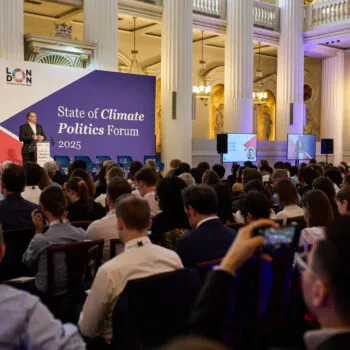Over the next 15 years $90tr will be invested globally in infrastructure. The choices being made by governments now will determine our ability deliver stability, resilience and a prosperous global economy in a climate changing world. Energy efficiency must be factored into global infrastructure planning if we are to cut emissions, improve welfare, and avoid asset stranding.
A recent statement by 36 NGOs, corporate groups and think-tanks from 18 countries called on G20 leaders to define energy efficiency as an infrastructure investment priority. This was backed up by the heavyweight modellers Frontier Economics, whose recent report found energy efficiency compared favourably to other types of infrastructure.
Classic infrastructure investments (i.e. road and rail projects, pipelines and power-lines) have historically kept economies running, GDP growing and claim a significant part of most national capital expenditure budgets. But in a world that has already reached 1⁰C of warming, overlooking energy efficiency is an economic opportunity lost.
Large scale efficiency investments would be major driver of growth and would have positive impacts on employment, energy security and reduce the need for healthcare expenditure. The IEA suggests that in the coming 25 years energy efficiency will need to command more than half of the energy related budget to avoid the danger of higher global temperature increases. An 8-fold increase in financing energy efficiency projects worldwide as part of the wider “shifting of the trillions” which is establishing the new decarbonised normal. So what is preventing energy efficiency from scaling up in these countries?
We have been talking to experts, policy advisors and advocacy groups in the G20 countries to uncover where the barriers lie. The good news is that politicians are rhetorically in favour of energy efficiency. In many of these countries there are new pieces of legislations in place targeting the energy transition. In the last decade the emerging economies of China and India have begun treating energy efficiency as an important source in their future energy mix and have allocated increasing state finance to harness this opportunity. A growing number of countries are recognising the problem of waste and have set targets to improve their energy productivity.
However, speaking to international specialists it’s clear that we’re a long way from addressing the problem at scale, either in terms of setting ambitious targets or the necessary financing. We’ve heard numerous examples of nations working against themselves. Countries often have a mix of misplaced energy subsidies, ad hoc small scale efficiency schemes and an issue of governance, when ministries in silos miss the benefits that fall across multiple departments. Even when working to address energy and climate change, a focus on one side of the supply and demand mix leads to imbalanced investment between renewable electricity, heat sources, and energy efficiency.
Efficiency is clearly a victim of market failure and requires capital outlay from governments to avoid underinvestment. In economic language consumers and businesses have a higher discount rate than societies as a whole – so to reach the optimal level of investment and incur all the benefits that societies desire, governments must intervene. In the case of insulating a home – despite the attractive returns from investing in insulating their house most people are dissuaded by the upfront cost. The capital they sink into the physical structure will be locked in for decades. What is more, those who don’t have the capital to invest and are most in need, often live in the least efficient homes. Yet both they, and society at large have a good deal to gain from this investment.
Whilst there is broad agreement, reflected in political statements, that substantial long lasting benefits are to be achieved through energy efficiency, there has yet to be the investment required to deliver them. There is a strong case for making energy efficiency an infrastructure priority in order to overcome barriers and realise potential.


